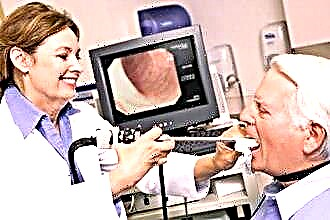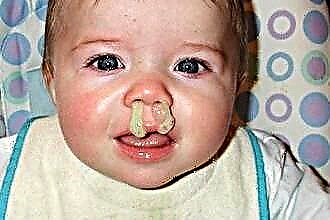Probably no disease bothers children as often as a runny nose. The slightest hypothermia can cause congestion and nasal discharge. Fortunately, a runny nose rarely causes complications and goes away quickly, especially if parents know how to properly treat it. The famous pediatrician E.O. Komarovsky, author of the book "Child's health and common sense of his relatives." In this article, we will discuss how Komarovsky advises to treat a runny nose in a baby.
Komarovsky E.O. believes that the runny nose in the smallest patients should be treated in the most natural ways, limiting the use of medications.
At the same time, the pediatrician advises parents to be on the alert, because a runny nose is not such a harmless disease as it might seem. So, a runny nose in infants can be accompanied by high fever, dehydration. Prolonged rhinitis can provoke the development of otitis media, sinusitis, chronic upper respiratory tract infections.
Runny nose as a symptom of the disease
A runny nose is a symptom of many diseases, both infectious and non-infectious. So, a runny nose in an infant can be a symptom of a viral infection, bacterial rhinitis, an allergic reaction to inhaled allergens. Let's take a closer look at these violations.
Infection
In the vast majority of cases, snot in a child is a symptom of viral rhinitis, a disease caused by ARVI viruses. ARVI is especially active in the cold season, since with hypothermia, the body's resistance to viruses decreases. That is why children so often catch a runny nose at the slightest hypothermia. Nevertheless, the source of the virus is always a person (sick or carrier), but not the air of low temperature.
Rhinitis is caused not only by viruses, but also by bacteria, although this is quite rare, and usually as a complication of ARVI.
Human immunity is formed in the process of contact with surrounding viruses and bacteria. A baby is faced with most of them for the first time, so he can easily become infected from others who do not even have symptoms of the disease.
Symptoms of an infectious rhinitis in infants:
- transparent, liquid or viscous snot (observed with viral rhinitis);
- Thick yellow or green snot (a sign of a bacterial infection)
- coughing as a result of mucus draining down the throat;
- child's anxiety, moodiness;
- poor appetite (the baby cannot suckle because the nose is stuffed up);
- with both viral and bacterial rhinitis, the body temperature of an infant can rise to 38C (sometimes even higher).
The suspicion of infectious rhinitis in an infant is a serious reason to consult a pediatrician.
Allergy
Allergic rhinitis is a very common disease that can be diagnosed even in an infant.
Allergic rhinitis is an inflammation of the nasal mucosa, provoked by inhalation of an allergen - wool, dust, pollen, household chemicals, etc.
The symptoms of this condition are as follows:
- profuse discharge of liquid transparent mucus from the nose;
- sneezing;
- redness of the eyes, lacrimation;
- normal body temperature, appetite and activity of the child.
Allergic rhinitis can be seasonal (associated with the flowering of a particular plant), or year-round (for example, to bleach). In a child, allergic rhinitis appears for the first time in new conditions for him, when he first encounters an allergen. If allergic rhinitis is suspected, you should consult your pediatrician and allergist.
When a runny nose is the norm
We are all accustomed to associating a runny nose with illness, but it can also be a completely normal, physiological phenomenon, especially when it comes to children under 2 years of age. The reason for this is the peculiarities of the work of the mucous membrane in early childhood.
Physiological rhinitis
 While the baby is in the womb, his mucous membranes of the nasopharynx practically do not function (even without this, they are constantly moistened with amniotic fluid). After birth, the baby finds itself in completely different conditions, and its mucous membrane undergoes significant restructuring. In the early days, it is usually almost dry, and then, on the contrary, becomes too moist.
While the baby is in the womb, his mucous membranes of the nasopharynx practically do not function (even without this, they are constantly moistened with amniotic fluid). After birth, the baby finds itself in completely different conditions, and its mucous membrane undergoes significant restructuring. In the early days, it is usually almost dry, and then, on the contrary, becomes too moist.
The process of adaptation to the conditions of the air environment takes an infant 1-3 months. All this time, he may have transparent mucous discharge from the nose - the so-called physiological rhinitis in infants.
This is completely normal and should not bother parents. A physiological rhinitis in a newborn does not require any treatment.
Teething
Very often, a runny nose in infants over five months of age appears with teething. At the same time, the child's appetite disappears, the throat turns red, and the body temperature rises. All this is very similar to ARVI, but you should not rush to conclusions. Komarovsky runny nose in infants during teething explains from the following positions:
- firstly, excess mucus in the nose is formed due to increased blood flow to the gums (as well as saliva);
- secondly, children during the eruption period are more susceptible to various infections, including ARVI.
Thus, teething nasal discharge is not always a symptom of a cold - it is often just a physiological response to gum disease.
In any case, a teething child needs some rest and care. The runny nose itself during eruption does not require any additional treatment.
Reaction to adverse conditions
Komarovsky notes that parents are often in a hurry to feed a child with a runny nose with drugs, without understanding what the reason is. It turns out that babies, especially under one year old, are very sensitive to the characteristics of the air in the house. If the air is hot and dry, a protective mucus forms in the baby's nose, which prevents the nasopharynx from drying out. Sometimes too much mucus is produced and it looks like a runny nose.
One of the characteristic signs that the conditions in the nursery do not correspond to the norm is the child's runny nose and cough in the morning, immediately after waking up. This means that thick mucus is constantly accumulating in the child's throat, flowing down from the nasopharynx.
Waking up, the child tries to swallow mucus, which is why he coughs. In many cases, to eliminate such symptoms, it is enough to adjust the temperature and humidity of the air in the house, as well as eliminate irritating factors - dust, tobacco smoke, etc.
Treatment
Dr. Komarovsky has repeatedly emphasized that it is necessary to treat not a runny nose, but the disease that caused it - a viral infection, bacterial rhinitis or an allergic reaction. Based on this, the most important part of successful treatment is diagnosis - determining the causes of the common cold. If you just feed your child drugs "at random", nothing will work out well.
ARVI
If the cause of the common cold is a viral infection, local treatment in the form of nasal drops is sufficient. The child's body develops immunity to the virus for 3-5 days, after which the disease declines, therefore Komarovsky does not see the point in using antiviral against ARVI (except for influenza).
In the treatment of acute respiratory viral infections, Komarovsky believes that the main thing is "not what to treat, but what to breathe." Indeed, in conditions of normal temperature and humidity, a runny nose with ARVI passes quickly and without complications. To speed up this process, the pediatrician recommends walking with the child more often, bathing him in the bathroom so that he breathes moist air.
Komarovsky believes that the optimal air temperature for a child's room is + 20C, and humidity - 60-70%.
Bacterial rhinitis and sinusitis

If the child is diagnosed with bacterial rhinitis, antibiotics may be needed. However, in many cases, bacterial rhinitis can be treated locally by continually thinning and disinfecting mucus with topical antiseptics (antimicrobial nasal drops). It all depends on whether the sinuses are infected (maxillary, frontal, etc.). If your child has sinusitis, no droplets will be able to kill the bacteria that grow deep in the sinuses. Only antibiotics acting through the blood (pills or injections) can cope with this task. Komarovsky emphasizes that it is systemic, but not local antibiotics.
It is dangerous to bury an antibiotic solution in a child's nose - in the future it can provoke the development of treatment-resistant chronic infections of the nasopharynx and nearby organs.
Allergic rhinitis
In allergic rhinitis, prevention plays an important role - avoidance of the allergen. Unfortunately, in many cases this is very difficult to implement, for example, if a child is allergic to tree pollen. To reduce the manifestations of allergies, you can choose an antihistamine. There are antihistamines created specifically for children - mebhydrolin (from 1 year old), loratidine (from 2 years old), hifenadine (from 3 years old), etc. Consult your pediatrician which drug is right for you.
To relieve an attack of an allergic rhinitis, use vasoconstrictor nasal drops. Choose a drug labeled "for children", for example, Galazolin for children, Naphthyzin for children, etc.
Drops for babies
 In the treatment of rhinitis, several types of nasal drops are used: vasoconstrictor, moisturizing, isotonic, anti-inflammatory, etc. They all act in different ways and are used in different cases.
In the treatment of rhinitis, several types of nasal drops are used: vasoconstrictor, moisturizing, isotonic, anti-inflammatory, etc. They all act in different ways and are used in different cases.
For example, vasoconstrictor drops (naphthyzine, otrivin, tizin, etc.) act on blood vessels, contracting them. As a result, the swelling of the mucous membrane decreases, and the patient's nasal breathing is restored.
Vasoconstrictors act quickly and efficiently, but they have several disadvantages. Firstly, they are addictive, so the course of their use should not exceed 5 days. Secondly, with frequent use, they can cause a burning sensation in the nose, swelling of the mucous membranes, dry mouth. More serious side effects can also occur - nausea, headache, insomnia, heart rhythm disturbances, etc.
Komarovsky does not recommend the use of vasoconstrictors for the common cold in ARVI in infants. An exception is if the nose is very stuffy, which makes the child unable to eat or sleep.
The safest way to treat a runny nose in a child is with drops based on seawater (Aqua Maris baby and analogues). They prevent thickening of mucus in the nasopharynx and promote its excretion. Choose a medicine for the nose in the form of drops, and not a spray - inhalation of small particles of the drug can provoke a spasm of the larynx in an infant.
Komarovsky notes that ordinary saline solution copes with a cold no worse than pharmacy drops. It can be purchased at the pharmacy and instilled into the patient's nose using a pipette (1 drop is enough). You can bury your nose with saline every half hour or hour.
Conclusions
Parents should be as responsible and attentive as possible when it comes to children and their health. However, this does not mean that you should control every movement of the child, sterilize everything around and buy kilograms of medicine at the first symptoms of a cold. This is exactly what Komarovsky is trying to convey, telling his parents "let's be afraid correctly." Remember that with normal breastfeeding, a runny nose goes away quickly and does not adversely affect health.

 Komarovsky E.O. believes that the runny nose in the smallest patients should be treated in the most natural ways, limiting the use of medications.
Komarovsky E.O. believes that the runny nose in the smallest patients should be treated in the most natural ways, limiting the use of medications.

